Did you know you can make butter from cream? This is a super simple way to make butter at home, but it does require a bit of effort.
You need good quality double cream, a jar and some strong arms!
This activity is a fun kitchen hack if you've got leftover cream and a great way to learn about colloids and emulsions too!
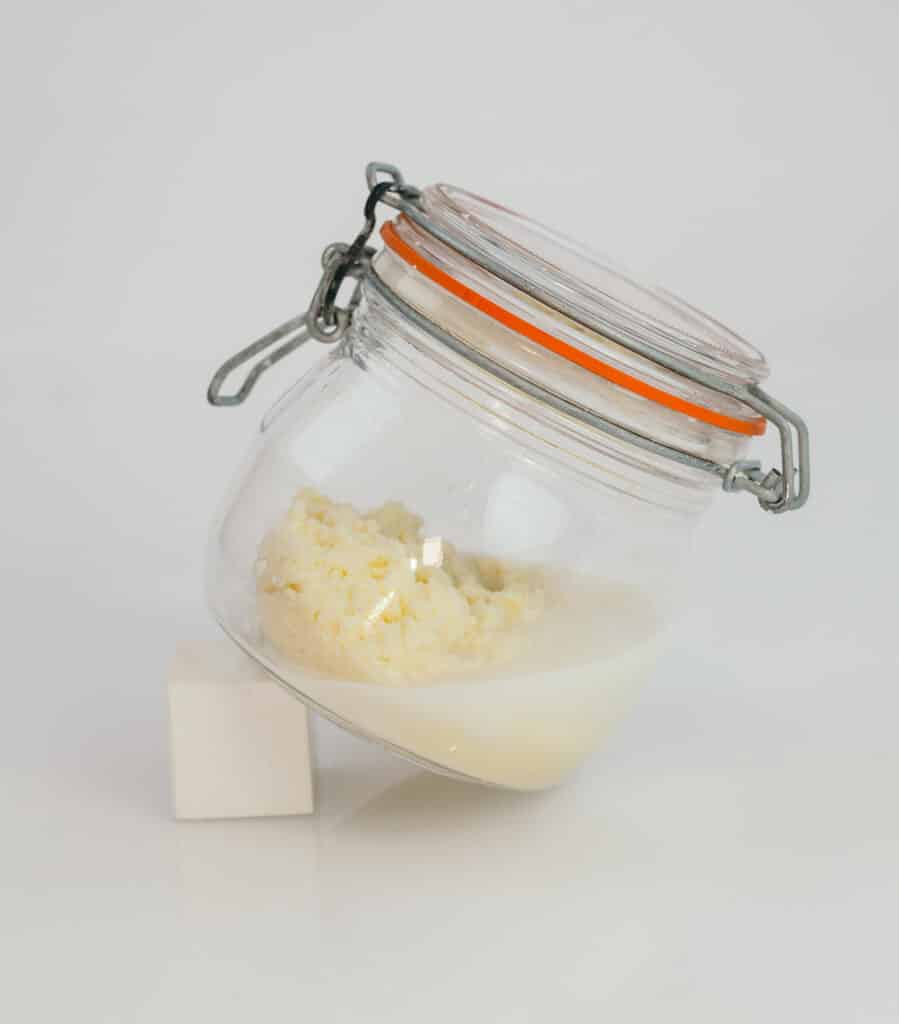
Cream is basically fat droplets mixed in water. When you shake the cream in the jar, the fat droplets stick together to form butter and a milky liquid called buttermilk.
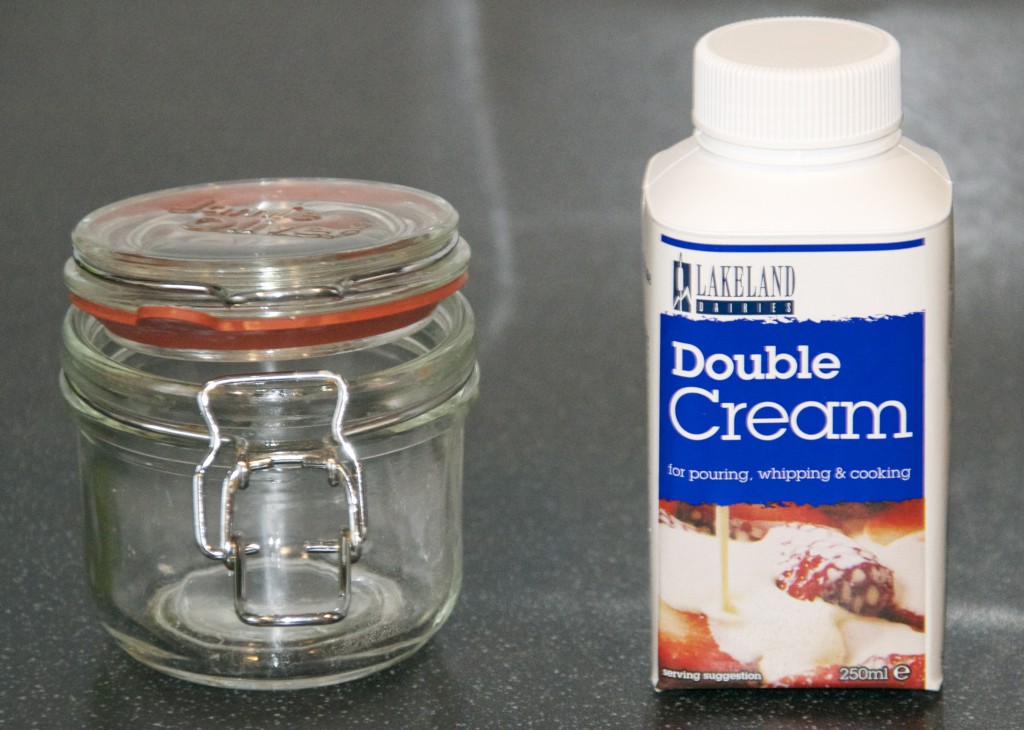
How to make butter from cream at home
You'll need
Double cream - at room temperature
A container with a lid
1-step method of making butter in a jar
Let the cream warm up to room temperature.
Half-fill the jar with the cream and shut the lid tightly.
Shake the jar until you feel a lump form. You do need to shake quite vigorously, so maybe you can round up some friends to help. First, the cream will thicken up a little like whipped cream.
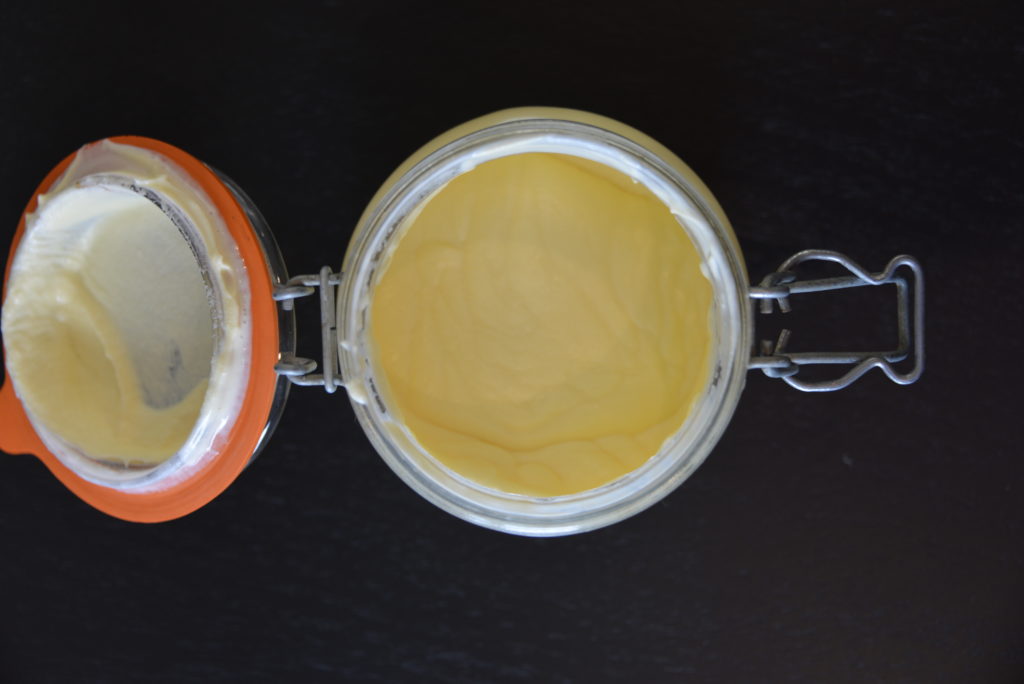
Shake for longer and the cream will turn into a lump of butter with some milky looking liquid left behind. The milky liquid is buttermilk.
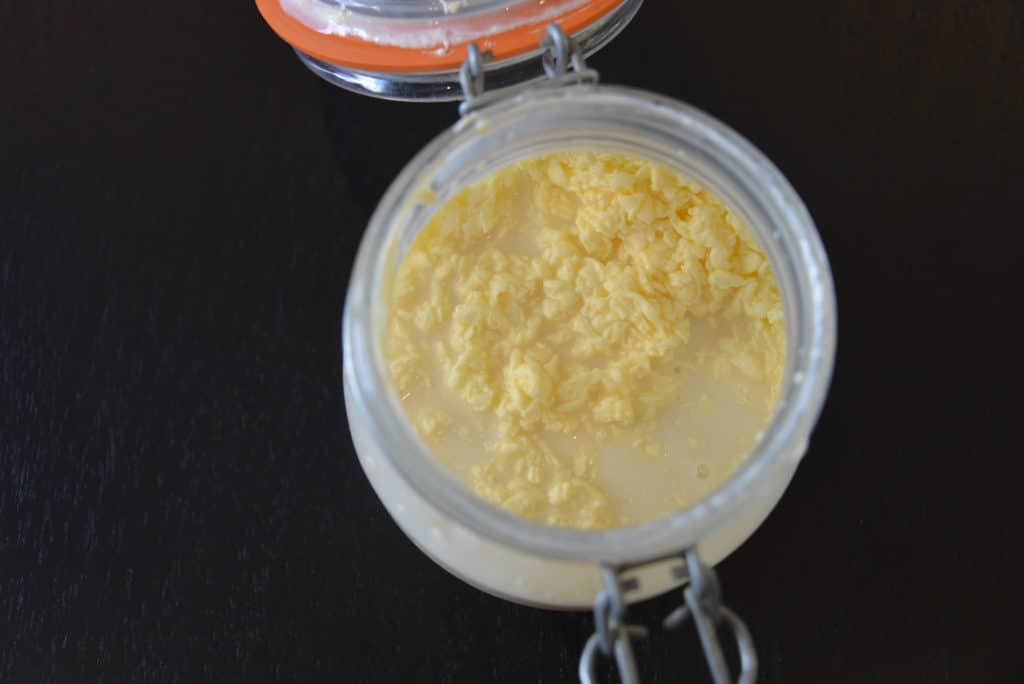
Wash your hands and gently squeeze as much buttermilk from the butter as you can. Give it a rinse under the tap and taste it!
What do you think of the taste? It should taste quite different to shop bought butter as it doesn't have any added flavourings or preservatives.
Why can you make butter from cream?
When you think of a mixture of substances what do you think of? Probably not cream? Cream is a type of mixture called a colloid, it is made up of very tiny particles of fat dispersed in water. When you shake the cream the fat particles stick together, forming butter.
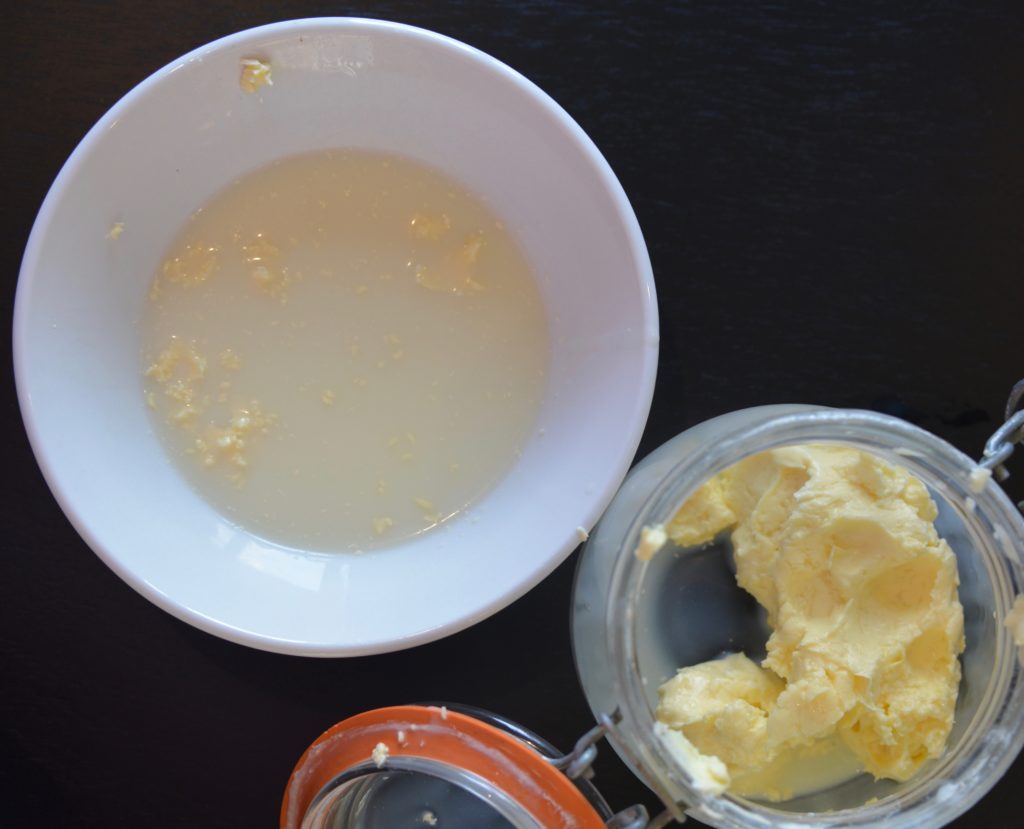
Cream and butter are a type of colloid known as an emulsion.
Did you know it was so easy to make butter?
More ideas for science in the kitchen
For more kitchen science ideas, check out my fantastic kitchen science experiments.
As well as making butter from cream, did you know you can make glue from milk?
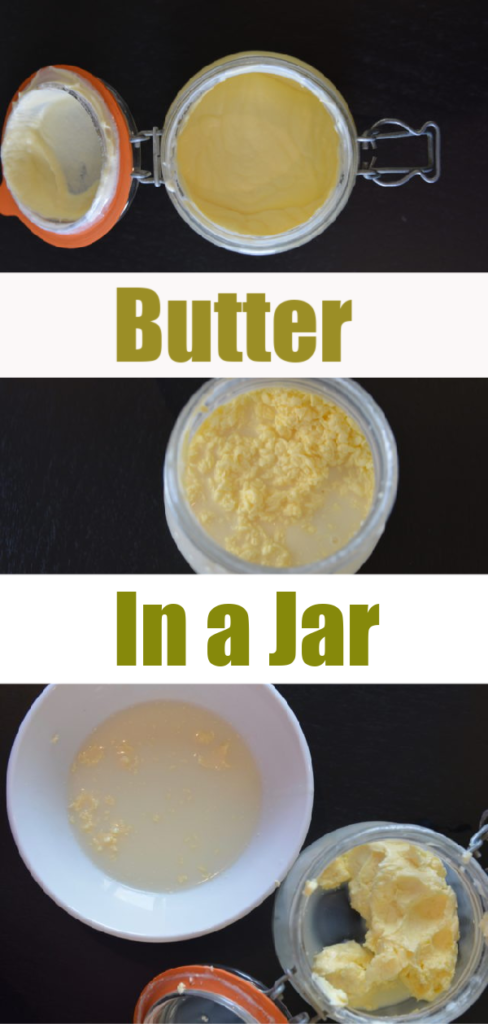
Last Updated on September 17, 2024 by Emma Vanstone
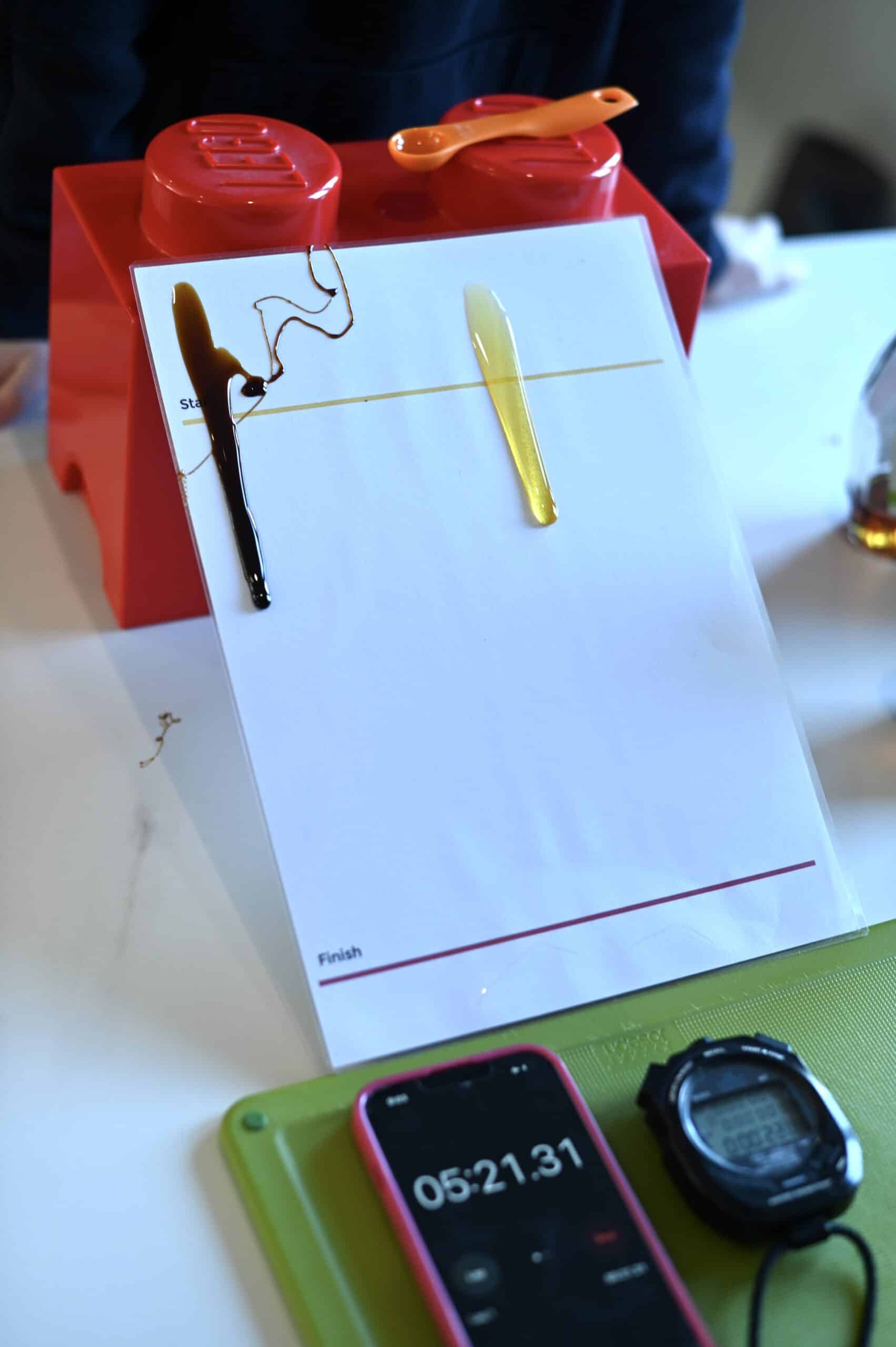
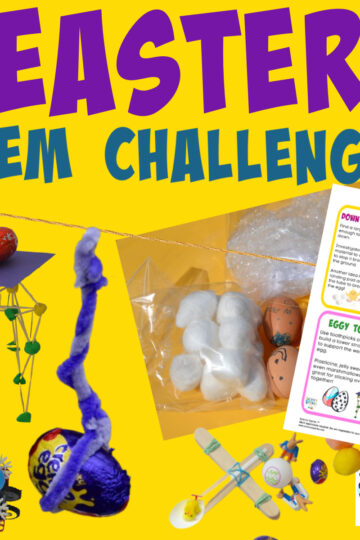
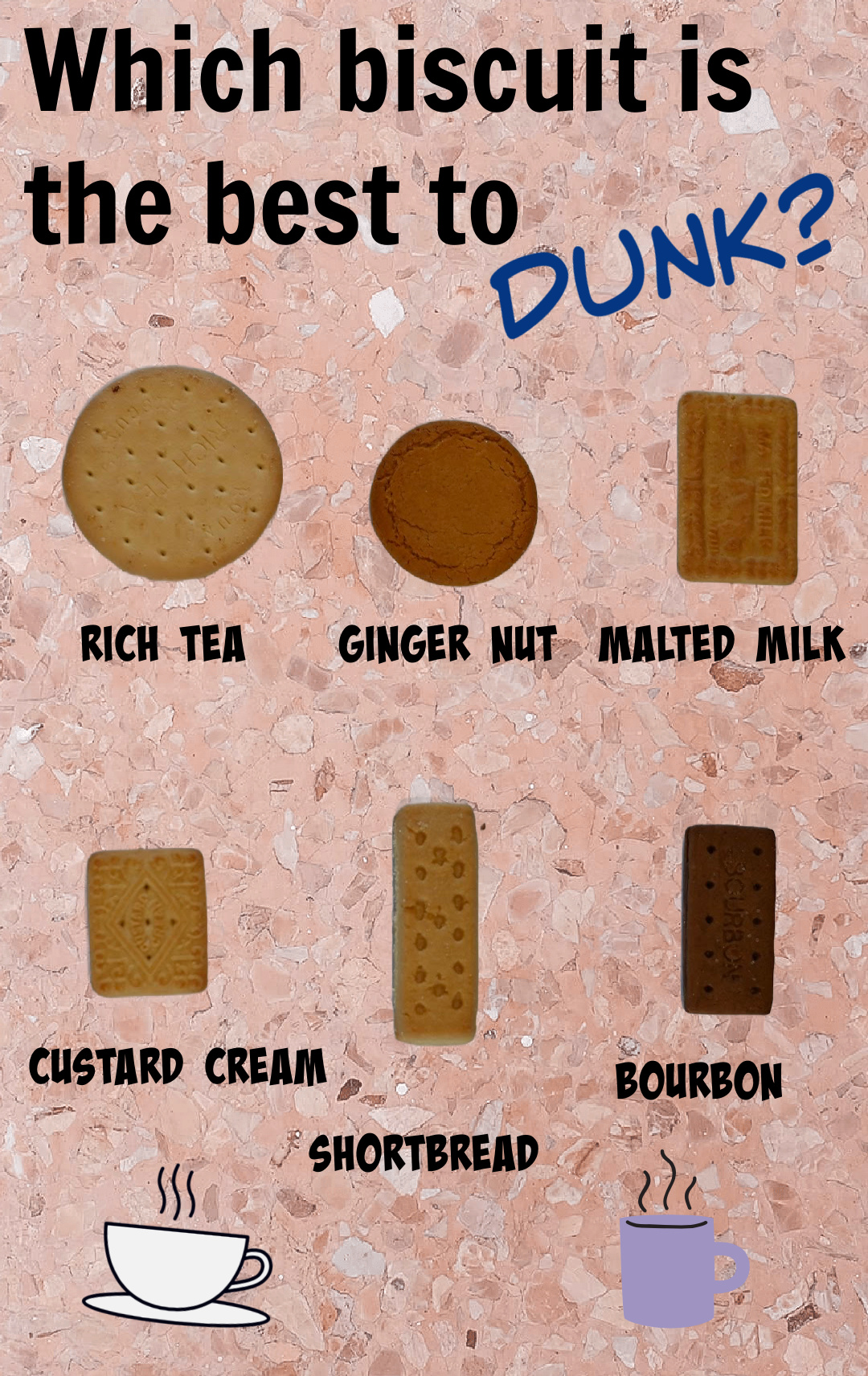
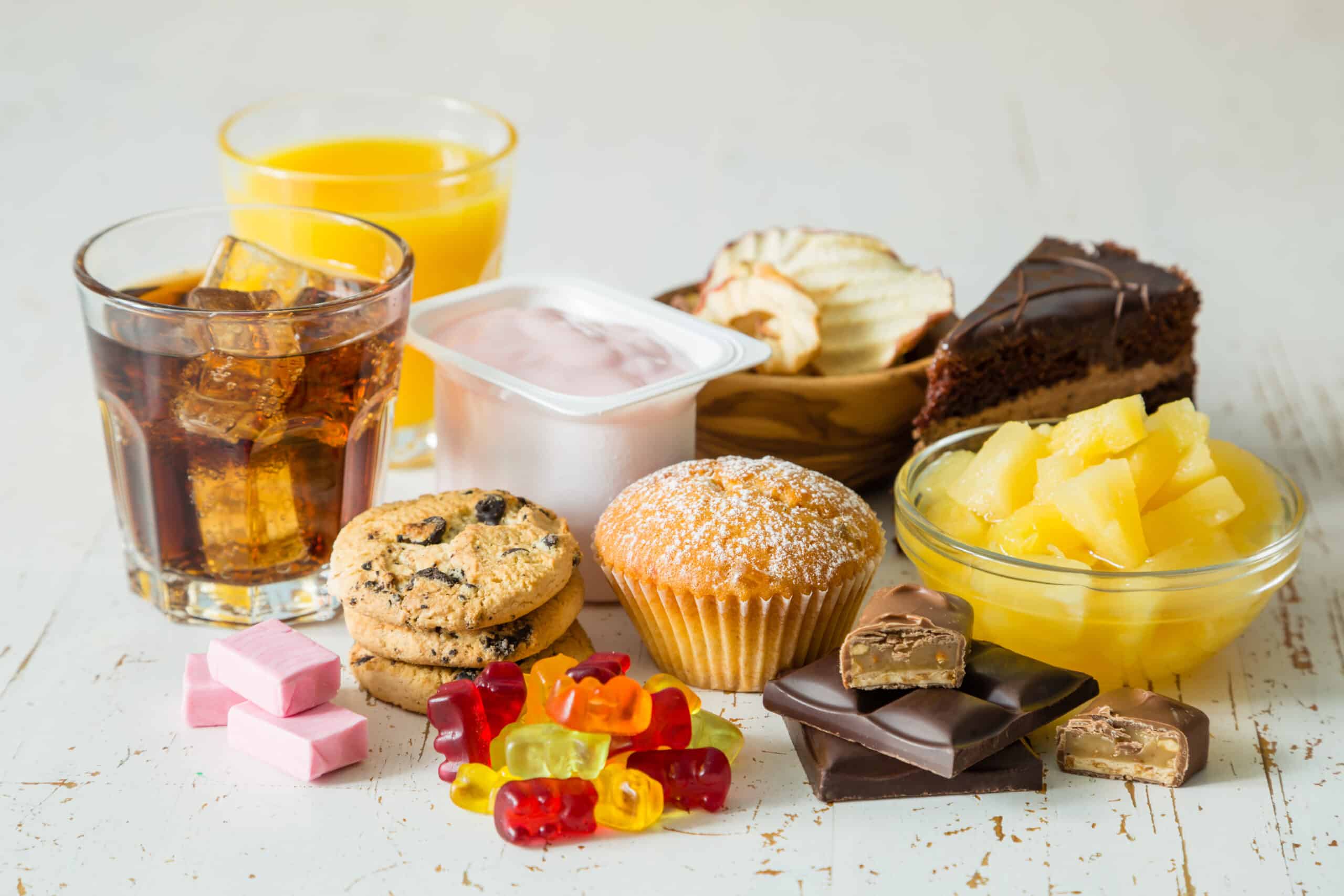
Cerys @ Rainy Day Mum says
I love this experiment it is a great hands on science activity
ScienceSparks says
Thanks Cerys!
@BlueBearWood says
Love this as well. Did go on to add any flavour? Think I'mm going to give this a go with the girls to take into school. 🙂
MsXpat says
LOL I thought that's what it was in the last pic you posted of the creamy stuff.
Ticia says
I need to let my kids try this sometime. It's been on my list a long time
Thanks for linking to Science Sunday
Megan says
I have done this with a group of middle school students and with my 4 year old. It was so much fun! We did it in a smaller container and added a marble to help the process and a bit of salt. Fun AND delish!